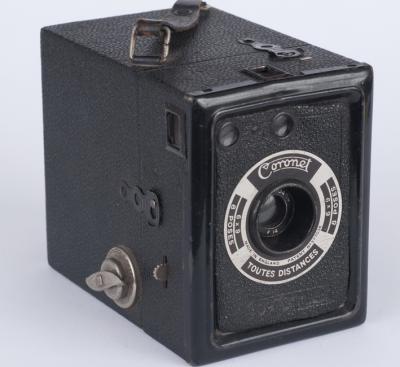It has been said that “a picture is worth a thousand words.” The notion here is that a single image is enough to present an idea so complicated that hundreds of words are required to do it justice. If this is so, then photographs, which are direct and unadulterated expressions of the reality seen by the camera, should be the unsurpassed and unequaled medium for expressing truth – including the truths of the Holocaust. The strength of photographs as expressions of the truth come from their “mechanical aura and the verisimilitude that [they] convey.” As Walter Lippmann, the two-time Pulitzer Prize-winning journalist and writer wrote,
Photographs have the kind of authority over imagination today, which the printed word had yesterday, and the spoken word before that. They seem utterly real. They come, we imagine, directly to us, without human meddling, and they are the most effortless food for the mind conceivable….The whole process of observing, describing, repeating and then imagining has been accomplished.
In other words, photographs assist in our understanding of an event by capturing the scene; and if “seeing is believing”, then photographs, which present reality, allow us to understand and believe that what was captured on film is what really happened.
Yet, it has also been said that “[p]hotography does more than reflect reality; it also interprets it.” In this respect, photography is much like other art forms; while photographers can serve to present a scene with authenticity, those same photographers can also manipulate the scene they are shooting. For instance, photographs may be cropped to eliminate certain elements while emphasizing others; photographs may focus on specific subjects in order to present a specific world view or moral position; photographs may omit certain elements altogether. In addition, photographs can serve to “freeze” a particular scene, creating an image that will be identified with a subject. There are certain photographs that have become icons of the Holocaust – the boy surrendering in the Warsaw ghetto with his hands raised as a German soldier with a rifle stands next to him being perhaps the most iconic. These frozen images become fixed in our collective visual memories, acquiring symbolic overtones.
In assessing the use of photographs as tools in commemorating the Holocaust, and as historical sources, therefore, we must always be aware of a number of issues that will influence the way a photograph looks and what it is actually saying to us.
- Who is the photographer? After all, the photographer is a human being, and he may be expressing his world view through his camera. A picture taken in a ghetto by a German photographer will show his subjective interpretation of reality – for instance, photographs taken by official German photographers in the Warsaw and Lodz ghettos were intended to depict Jews as hideous, disgusting, immoral and despicable, for purposes of antisemitic propaganda, while photographs taken clandestinely by Jewish photographers like Mendel Grossman in Lodz, discussed below, were meant to create a visual record of German atrocities, and to commemorate the victims of these atrocities, including the photographer’s own family.
- Why was the photograph taken? This issue is connected to the first question. Some Holocaust photographs were taken to show racial supremacy or as soldiers’ trophies of their acts in humiliating Jewish victims, such as in the photographs taken by German police officers and soldiers in the field in eastern Poland, discussed below.
- Where was the photograph found? Was it distributed? If so, to whom? As will be seen below, many personal photographs of atrocities and deportations taken by German soldiers were sent to friends and relatives back home as though they were souvenirs; many were posted and were available for sale. This indicates that the soldiers and policemen involved in these activities were agreeable to their mission of killing Jews and were proud of what they were doing; so much so that they disobeyed orders that prohibited photography at mass executions. Photographs that were never distributed, including those found in the Auschwitz Album, discussed below, indicate that perhaps someone was trying to hide them, based on a feeling that they showed something about the German plan to exterminate the Jews that they were not supposed to show.
- What is absent from the photograph? In the Sonderkommando photographs discussed below, the original images include the frames of the window from which they were secretly taken, which allows us to understand the haste and stealth with which the photographs were taken. However, the originals were cropped to show only the images. In the Auschwitz Album, much is missing from the photographs; the biggest omission is violence. There is not a hint of violence, even though the victims of the selektion process are being sent to the gas chambers.
- Was the photograph staged? Were the subjects under duress, so that they were forced to cooperate with the photographer? In certain pictures from the Warsaw ghetto, discussed below, German propaganda photographers created incidents that never actually happened, though the photos look real enough.
Photographs are certainly a method of commemoration and a tool for remembering what occurred in the Holocaust, but they must be evaluated in order to understand whether they contain a bias, and what that bias is. Several important visual photographic case studies are discussed below in connection with the questions above.







